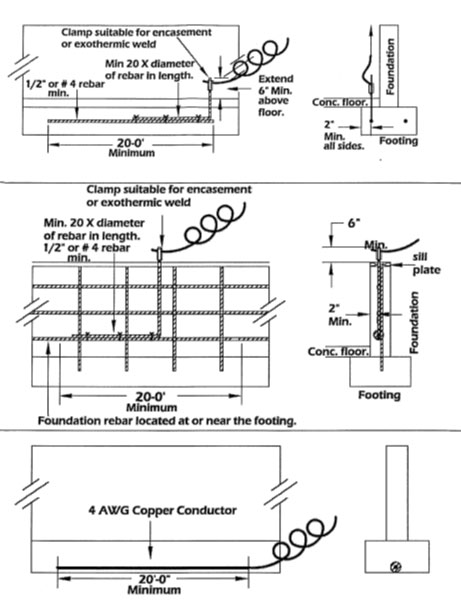- Home to DLR
- Home to Electrical Commission
- Commission Information
- Consumer Complaints
- Fees for Inspections
- Forms
- Homeowner Wiring
- Inspections
- Licensing
- Applications & Forms for Licensure
- Continuing Education Requirements
- Exams for Licensure
- Reciprocal Agreements for Licensure
- South Dakota Laws & Rules
- Tool Box - Resources for Electricians
- Undertaking & Insurance Requirement
- Wiring Bulletin (Adobe PDF)
- Other Boards & Commissions
South Dakota Electrical Commission
Tool Box - Grounding Electrode Systems
The electrical code requires the grounding of electrodes that provide the essential function of connecting a building's electrical system or electrical equipment to the earth or ground. Rather than total reliance on a single system, the electrical code has always required redundant or multiple grounding systems. Previous electrical codes have allowed the electrician the option of utilizing any two options consisting of grounding to metal underground water piping, the metal frame of a building or structure, ground rod or plate electrodes, concrete-encased electrodes, or other approved grounding methods.
The most reliable option of providing a means of grounding for life of a building is tying an electrode into the rebar within the footing or foundation's wall. The grounding provisions of the NEC were recently modified to clearly require the electrician to utilize the concrete-encased electrode as one of the ground system options.
The provision does not necessarily require that rebar be installed; however, it does require in new construction the stubbing out of at least 6 inches of rebar to tie on a grounding electrode at any time that the footing or the foundation has at least 20 feet of reinforcing bars of not less than 1/2 inch diameter or No. 4 rebar, encased in at least 2 inches of concrete, bonded together by steel wire ties or other effective means per the following illustrations.
Please work with the general contractor or electrician to ensure that the rebar is accessible for grounding. The best location for the exposed rebar is below the electrical panel if the location is known during the concrete pour or, as an option, adjacent to where the water line extends into the building.

